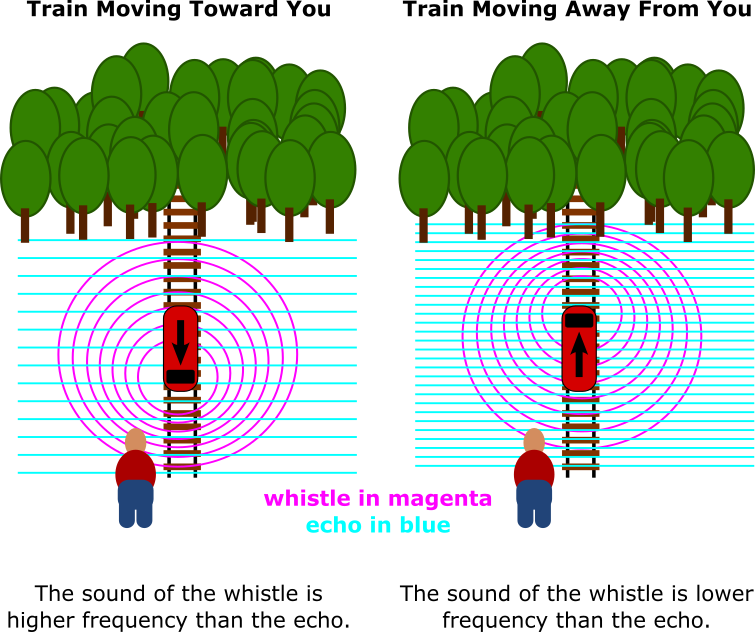Train Whistles
29 Nov 2022A quick post tonight – just relating an interesting observation that I made about train whistles.
I set outside and work any time the weather is fair. And in doing so I often hear one of the local trains in the distance blowing their whistle as they cross at an intersection. I realized one day that if you listen carefully, you can tell which direction they’re going – toward you or away from you – according to the sound of their whistle. Now obviously, there’s the Doppler effect, so that the sound of their whistle is higher pitch if the train is coming towards you and the lower pitch if the train is going away from you. But the Doppler effect by itself isn’t that helpful because you (or I at least) don’t have perfect pitch and don’t know what the normal pitch of a train whistle should be.
However, if you compare the sound of the train whistle to it’s echo then you can tell. If the echo is deeper than the train whistle, then the train is approaching. If the echo is higher than the train whistle, then the train is moving away. How’s this work? Look at my handy little graphic here:

The effect is due to the Doppler effect. The sound waves of the whistle stack up in front of the train and make a higher frequency sound. The sound behind the train is lower because the waves get spread out. And the echo will always be the sound from the other side.